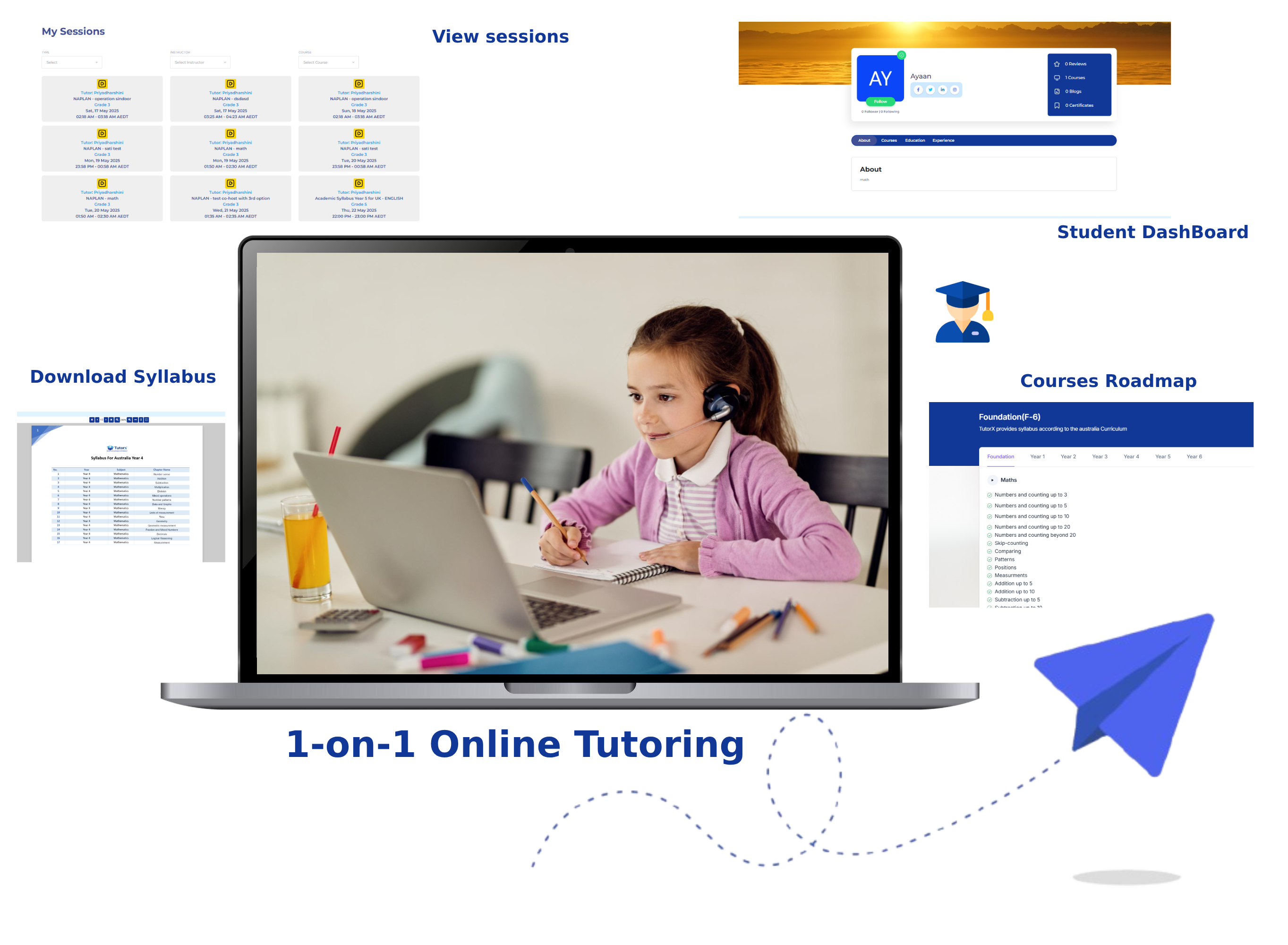Book a free trial session and start your personalized learning journey with our expert tutors.
Fill out the form below and one of our experts will contact you shortly.
Everything You Need, All in One Place
At The TutorX, we believe learning should be clear, focused, and at your fingertips. That’s why we’ve built a smart and user-friendly dashboard to empower every student on their academic journey. From live sessions and homework to performance tracking and resources—everything is seamlessly integrated to help you stay ahead with confidence.

Primary education in Canada, encompassing Grades 1 through 6, forms the foundation for lifelong learning. These years are focused on developing core academic skills in literacy, numeracy, science, and social studies, while also nurturing creativity, citizenship, personal development, and digital fluency. The curriculum emphasizes inquiry-based learning, critical thinking, and real-world application of knowledge. Students also engage in physical education, health studies, and the arts, all within a safe, inclusive, and student-centered environment. The goal is to ensure every child acquires the tools they need for personal and academic success in a diverse and evolving world.
Grade 1 marks the transition from early years or kindergarten into formal schooling. Students begin structured reading and writing, develop number sense, and explore basic scientific concepts through observation and experimentation. The curriculum encourages curiosity, listening, communication, and collaboration. Arts and physical activity support holistic growth, while social studies begin introducing the concept of community and local environments.

In Grade 2, students build upon foundational literacy and numeracy skills. They begin to read with greater fluency, write longer sentences and simple paragraphs, and solve basic math problems using addition and subtraction. Science introduces habitats and life cycles, while social studies expand to include Canadian identity and traditions. Students continue to grow in independence and responsibility, both academically and socially.
Grade 3 emphasizes the development of critical thinking. Students explore narrative and informational texts, write for a range of purposes, and are introduced to multiplication and division. Science focuses on structures and forces, and social studies may cover Indigenous communities and Canadian geography. Learning becomes more analytical and project-based, helping students connect with broader themes in society.
In Grade 4, students begin to analyze and organize more complex information. They are expected to read more critically, use writing to express opinions, and apply math to solve multi-step problems. Science introduces energy and habitats, and students explore Canada’s physical regions and provinces in social studies. The use of technology and digital tools increases, promoting digital literacy and responsible online behavior.

Grade 5 students are encouraged to think independently and take initiative in their learning. Literacy instruction includes summarizing, persuasive writing, and research skills. Math covers fractions, decimals, and measurement. Science explores human body systems, and social studies focuses on Canadian government and democracy. Citizenship education becomes more prominent, encouraging students to participate in discussions and community activities.
In Grade 6, students are prepared for the transition to middle school. Literacy skills are refined through analysis, argument writing, and presentations. Math introduces more abstract concepts like ratios and early algebra. Science delves into electricity, flight, or space (depending on province), and social studies examines global citizenship and interdependence. Students take on leadership roles and are encouraged to apply their learning in real-world contexts.
Administrator

Lorem Ipsum is simply dummy text of the printing and typesetting industry. Lorem Ipsum has been the industry's standard dummy text ever since the 1500s, when an unknown printer took a galley of type and scrambled it to make a type specimen book.
Lorem Ipsum is simply dummy text of the printing and typesetting industry. Lorem Ipsum has been the industry's standard dummy text ever since the 1500s, when an unknown printer took a galley of type and scrambled it to make a type specimen book. It has survived not only five centuries, but also the leap into electronic typesetting, remaining essentially unchanged. It was popularised in the 1960s with the release of Letraset sheets containing Lorem Ipsum passages, and more recently with desktop publishing software like Aldus PageMaker including versions of Lorem Ipsum.
Reach out to TutorX your questions spark the path to smarter learning
